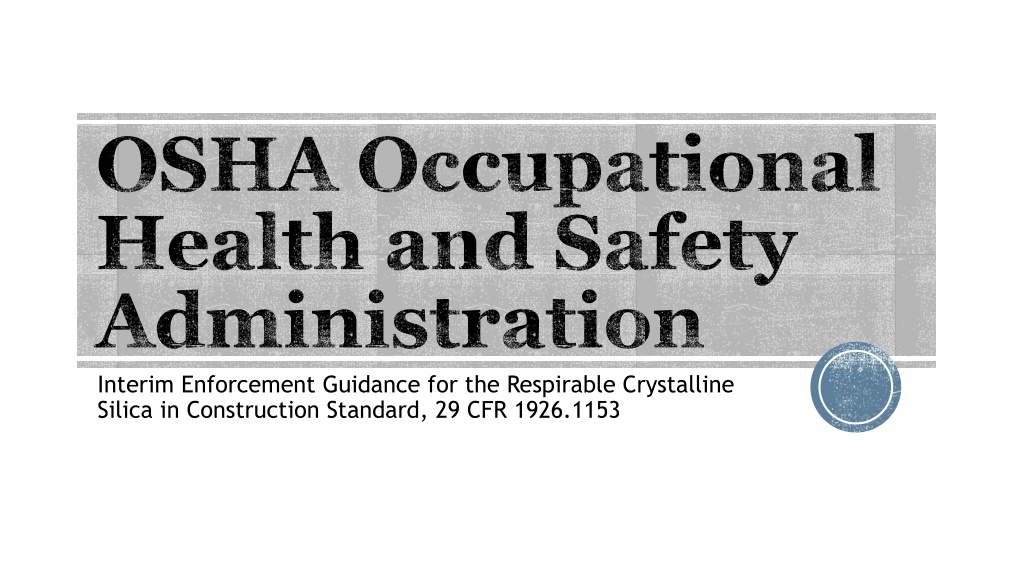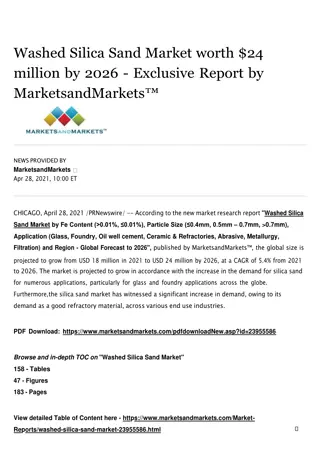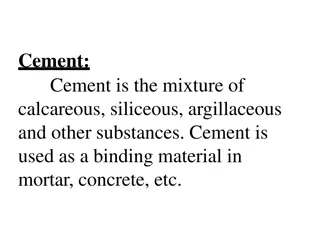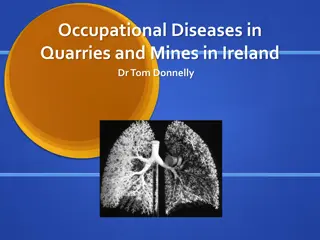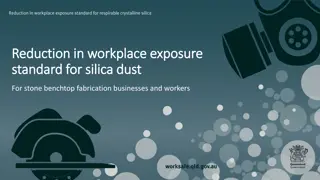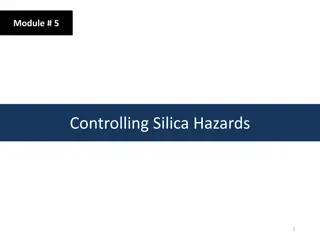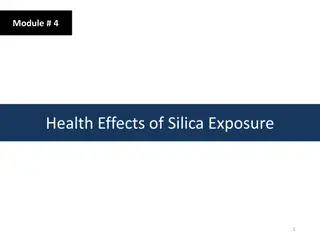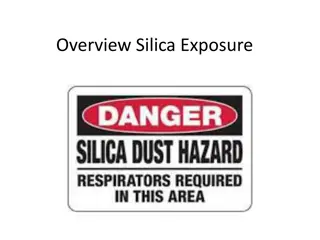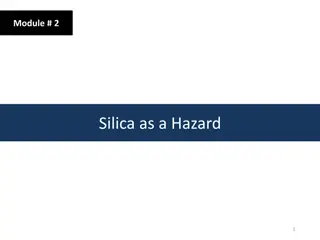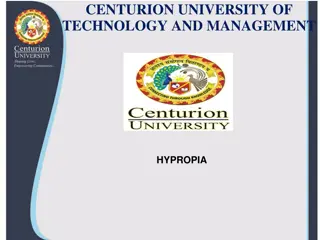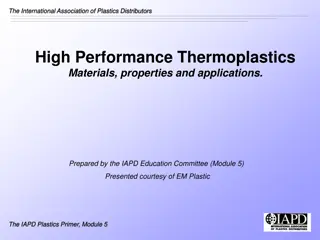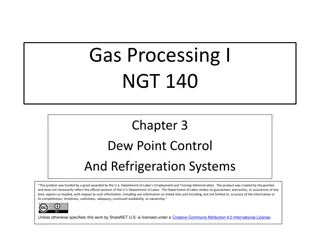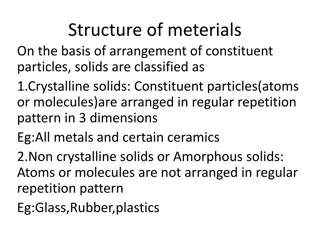Importance of Respirable Crystalline Silica Awareness in Construction
Understanding the hazards of respirable crystalline silica in construction is crucial for preventing serious health issues among workers. This guidance highlights the risks associated with silica exposure, the new enforcement rules, and the importance of implementing control measures to minimize exposure levels. It emphasizes the need for proper training and protection for employees engaged in tasks involving silica-generating activities. Compliance with OSHA standards and proactive safety measures are essential to safeguard workers from silicosis, lung cancer, COPD, and kidney diseases associated with silica inhalation.
Download Presentation

Please find below an Image/Link to download the presentation.
The content on the website is provided AS IS for your information and personal use only. It may not be sold, licensed, or shared on other websites without obtaining consent from the author. Download presentation by click this link. If you encounter any issues during the download, it is possible that the publisher has removed the file from their server.
E N D
Presentation Transcript
OSHA Occupational Health and Safety Administration Interim Enforcement Guidance for the Respirable Crystalline Silica in Construction Standard, 29 CFR 1926.1153
New Silica Exposure Rules Enforcement date September 23, 2017 Applied to Construction Requires employers to use engineering and work practice controls to reduce and maintain employee exposures to respirable crystalline silica to or below the permissible exposure limit (PEL), unless the employer can demonstrate that such controls are not feasible. Where controls are not sufficient to reduce employee exposure to or below the PEL, the employer must: Use controls to reduce employee exposure to the lowest feasible level and supplement them with the use of respiratory protection. https://www.osha.gov/dsg/topics/silicacrystalline/
What is Scilica? Crystalline silica is a common mineral found in materials like sand, stone, concrete, and mortar. Respirable crystalline silica very small particles at least 100 times smaller than ordinary sand is created when cutting, sawing, grinding, drilling, and crushing stone, rock, concrete, brick, block, and mortar.
Why is Respirable Silica a problem? Workers who inhale these very small crystalline silica particles are at increased risk of developing serious silica-related diseases, including: Silicosis, an incurable lung disease that can lead to disability and death; Lung cancer; Chronic obstructive pulmonary disease (COPD); and Kidney disease.
How does this change my role? The OSHA rule was written with the employees engaged in the tasks or assisting with the task listed. As and example OSHA states employees directing traffic nearby are not engaged in the task are not required to have respirators. Questions that have not been answered : Is there a recommended safe distance from the operation for people to avoid the silica dust cloud? How long is the silica airborne? WisDOT is developing a safety directive for our employees addressing Respirable Silica (In progress). Silica was discussed in our annual field safety training. Consultants need to read and understand the enforcement guidance. Consultants must make sure their employees are educated and protected.
What you should see in the field Contractors may use water or vacuums to control dust during operations that would cut, drill, saw, grind or crush stone, brick, mortar, concrete. If contractor staff is using respirators, should you be too?
Protect yourself WisDOT is working on developing guidance for complying with the order. If you think you need a respirator, request one. Read the guidance and understand ways to reduce your exposure.
